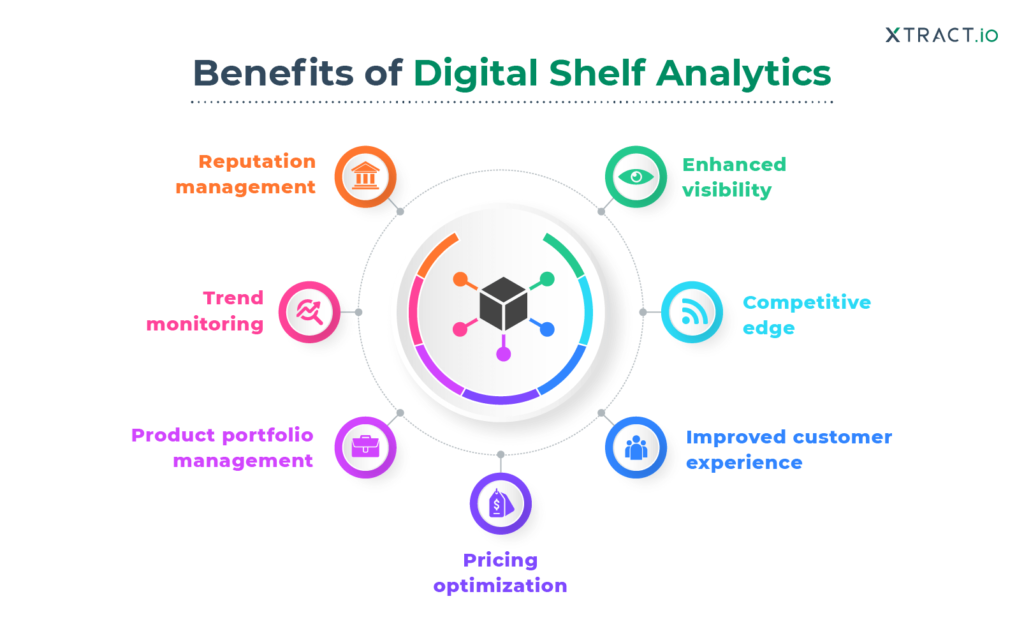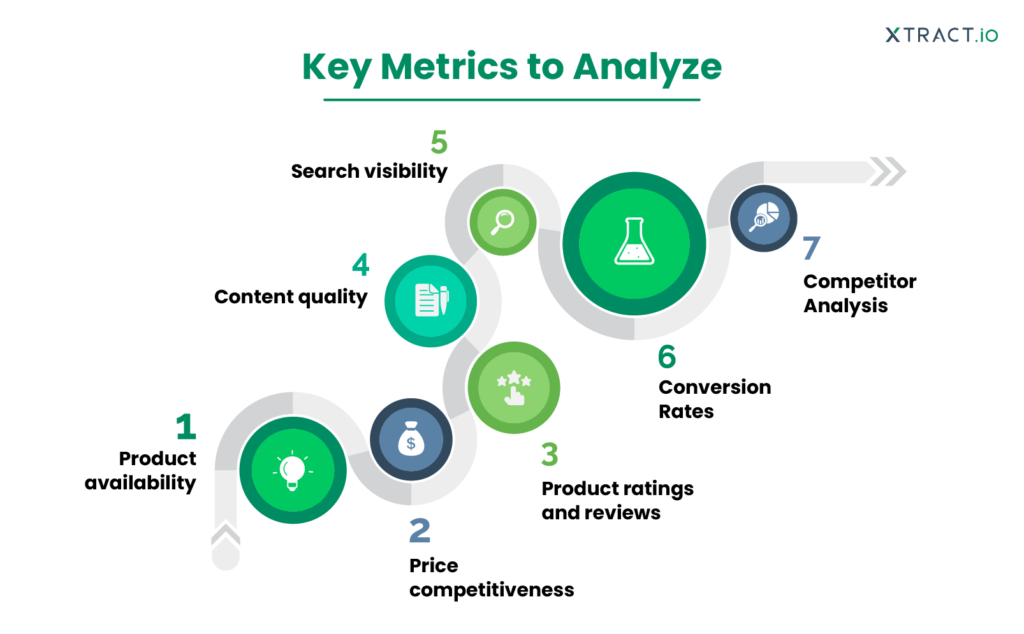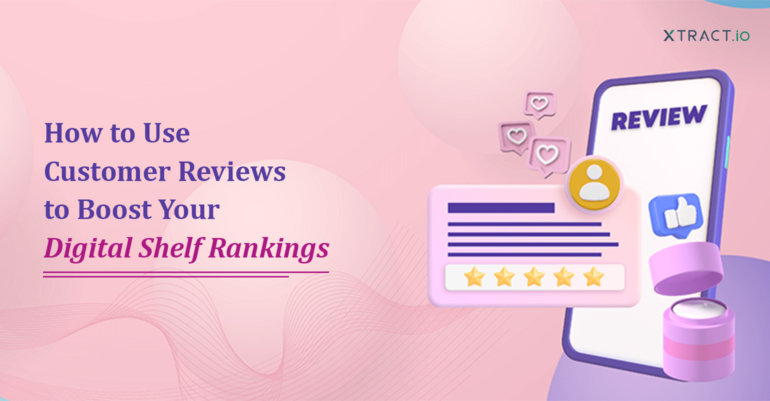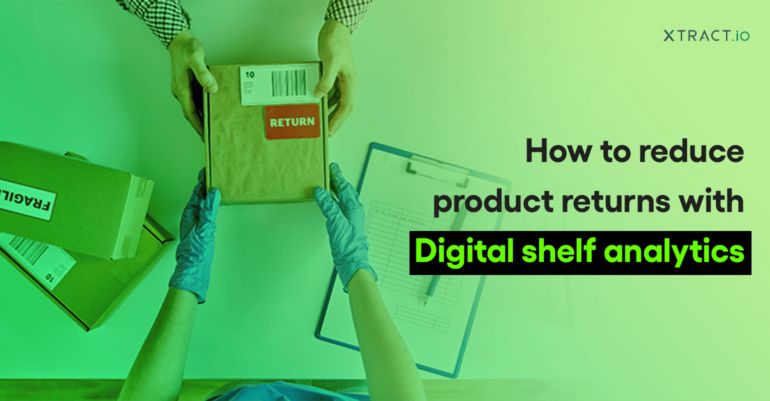In an increasingly competitive digital world, the concept of the “shelf” has transcended the physical realm and found a new home in the digital landscape. Brands no longer compete solely for a spot on a supermarket shelf; they are now vying for prime real estate on ecommerce websites and online marketplaces. The accelerating shift towards online shopping has given rise to a critical new capability for brands to win in the digital era: digital shelf analytics. In this comprehensive guide, we will delve into what it is, how it works, its benefits, key metrics to analyze, and how to implement it effectively for brands.
What is Digital Shelf Analytics?
A brand’s digital shelf analytics entails keeping a close watch on how the brand is represented and perceived across various ecommerce sites. This includes continuously tracking and evaluating relevant metrics related to the brand’s online listings, product assortment, content quality, pricing structure, inventory levels, and customer feedback.
In essence, it provides brands with a comprehensive overview of their digital shelf, allowing them to optimize their online visibility and performance. This endeavor requires the use of digital shelf analytics software. This software automates the analysis of data across digital shelves, making the process more efficient and accurate. This digital shelf monitoring software often employs AI algorithms and machine learning to provide actionable insights and recommendations.
How does Digital Shelf Analytics work?
Digital shelf analytics utilizes advanced algorithms and cutting-edge data processing techniques to compile and analyze vast amounts of data from ecommerce platforms. Simply put, it gathers data across the brand’s product listings, including titles, descriptions, pricing, images, reviews, availability, etc.
By closely monitoring this data, brands can gain valuable insights into how their products are positioned online compared to their rivals. These insights enable brands to identify areas of improvement and develop strategies to optimize overall online presence.
Technically, the software operates through a systematic process that involves the following steps:
Data Collection: The digital shelf analytics software gathers data from online platforms where your products are listed. Any online marketplace where your products are sold, including ecommerce websites, social media, or any online marketplaces.
Data Analysis: Following data collection, the software processes the information, conducting in-depth data analysis. It utilizes machine learning and algorithms to discern patterns and trends.
Competitor monitoring: Compare your brand’s performance with your competitors to identify areas of improvement and prevent fallbacks.
Actionable insights: The final step is to extract actionable insights from the data. This can include recommendations for optimizing product listings, adjusting pricing strategies, promotional campaigns, and enhancing content.
Benefits of Digital Shelf Analytics
Digital shelf analytics offers a range of benefits for brands seeking to excel in the online marketplace. Here are the most significant benefits it offers:

1. Enhanced visibility
Digital shelf analytics provides real-time data on listing discoverability, helping identify issues impacting product visibility. This could include sub-optimal placement on category pages, exclusion from relevant search results, missing content, etc. With these insights, brands can work with retailers to optimize on-page SEO, site merchandising, and search algorithms to increase product visibility and discoverability. Increasing organic site traffic and conversions, expanding brand reach.
2. Competitive edge
Maintaining a competitive edge is crucial for ecommerce players. Digital shelf analytics monitors competitors and offers insights into their product assortment, pricing trends, promotions strategy, product availability, etc. These inputs are invaluable for pricing optimization, launching targeted promotions, maintaining adequate stock levels, and differentiating your product portfolio. Continuously staying ahead of competitors ensures you capture more market share in the dynamic ecommerce landscape.
3. Improved customer experience
Investing in content quality and optimizing product listings leads to a more engaging and informative shopping experience. Consequently, satisfied customers become repeat buyers and brand advocates. It reveals how site visitors engage with product listings – this helps identify content gaps that impact experience.
4. Pricing optimization
Digital shelf analytics helps you fine-tune your pricing strategy by comparing it to competitors. You can identify opportunities to match the competition or differentiate your brand based on price. It provides competitor pricing data across multiple retailers. This allows brands to benchmark pricing. Optimized pricing typically improves profit margins through better-aligned price points.
5. Product portfolio management
Brands and sellers must analyze which products are top performers and which need improvement or retirement. DigiSense360, simplifies this process by providing a clear overview of product performance metrics. Metrics on sales velocity, ratings, reviews, conversions, and identify top sellers vs laggards in the product portfolio. This allows for optimizing assortments by doubling down on successful products and pruning slow sellers.
6. Trend monitoring
Another important feature of digital shelf analytics is that it offers a detailed view of market trends and consumer preferences and helps adapt your product offerings in real-time. Analytics dashboards make it easy to identify rising product trends based on surges in site searches, views, sales, etc. This allows capitalizing on trends early by launching relevant products, optimizing content, and targeting marketing.
7. Reputation management
Brands can get granular insights into customer sentiment to proactively manage and enhance their online reputation. By monitoring ratings, reviews, feedback, and social listening, brands can address negative sentiment through product improvements, customer service, and community engagement, from improving product quality to managing customer sentiment and competitive positioning effectively.
Implementing Digital Shelf Analytics
Now that you understand the importance of digital shelf analytics, you must know how to implement it effectively.
1. Select the right software: Choose a custom software solution like DigiSense360 that aligns with your brand’s needs and objectives, providing the features necessary for data collection, analysis, and competitor comparison.
2. Define Your Goals: Determine your specific aims and desired outcomes upfront because they will direct your digital shelf analytics approach.
3. Data Collection and Integration: Set up the software to collect data from all relevant platforms where your products are listed and ensure seamless API integration with your existing systems.
4. Regular Monitoring: Do real-time digital shelf monitoring and receive automated alerts, enabling swift responses to changes in the digital landscape.
5. Data Analysis and Action: Leverage the analytics capabilities to derive actionable insights from raw data to enhance your digital shelf performance.
6. Continuous optimization: Examine your digital shelf metrics and refresh your strategies regularly to align with shifts in market conditions, competitor actions, and customer preferences.
Key Metrics to Analyze
To extract valuable insights from digital shelf analytics, it’s crucial to focus on specific key metrics. Here are some critical metrics to consider:
1. Product availability
Get real-time product availability tracking with DigiSense360, ensuring that stockouts are promptly addressed to prevent lost sales.
2. Price competitiveness
Compare your pricing to competitors easily using DigiSense360’s built-in pricing comparison feature, allowing you to fine-tune your pricing strategies. Monitor competitors’ pricing changes and enable dynamic price optimization.
3. Product ratings and reviews
Monitor and respond to your customer reviews and ratings, creating a positive shopping experience with DigiSense360’s review tracking capabilities.
4. Content quality
Evaluate the quality of your product listings and content based on content scoreboard and optimize accordingly
5. Search visibility
Improve your product’s visibility by identifying areas for optimization with DigiSense360’s search visibility analysis and recommendations. Track keywords to tailor product content and expand organic reach.
6. Conversion rates
Track and analyze conversion rates, providing insights into what influences visitors to purchase. Optimizing conversion funnel performance increases sales.
7. Competitor analysis
Monitoring your competitors becomes effortless with DigiSense360; identify opportunities and stay agile to outperform them. Monitoring competitors provides benchmarking data to guide strategy. Gaining competitive intelligence informs better decision-making.

Conclusion
Brands must effectively manage their presence on digital shelves to thrive. Digital shelf analytics, supported by advanced AI-powered technology and data-driven insights, is necessary for brands to succeed in the online marketplace. By focusing on data collection, analysis, and continuous improvement, brands can optimize their visibility, pricing, and content, ultimately providing a superior shopping experience for customers.
As you embark on your digital shelf analytics journey, remember that the online marketplace is dynamic and ever-changing. With the right digital shelf analytics software like DigiSense360, your brand can thrive in the digital realm, securing a competitive edge and reaching new heights of success. Get a free demo to see how DigiSense360 can work for your brand.







